Let’s slow the bang inside your engine to see the split-second that moves your car.
Matt Mikka took a small 3-horsepower flathead engine…
…then hand built a glass head…
…and used a ultra high-speed camera to capture awesome footage.
Seeing the process at 4K (4,000 Frames per Second)
Is pure eye-candy.
So let’s fire this baby up and learn the basics.
Most people understand that gas lights and the explosion turns the tires.
Here’s what you’re looking at…
FOUR-stroke Engine
This simply means, 1 full cycle has 4 steps.
Step 1 Intake valve opens – letting air and fuel into the chamber while the piston is moving DOWN
Step 2 Piston moves UP – this compresses the fuel
Step 3 BOOM – fuel is ignited, forcing the piston DOWN
Step 4 Exhaust valve opens – finally the piston moves back UP which forces the exhaust out
Now let’s change up the fuel from Regular Gasoline to clear Rubbing Alcohol.
LESS BOOM
This shows combustion in a “Lean state”.
Too much Air too little flammable fuel.
Rubbing Alcohol – unburned gas leaving the port
Compare the GIF Above/Below
This shows combustion in a “Rich state”.
Why
Because this time Acetylene – colorless gas – is used for a big BOOM
Lean state = Less power but better Miles-per-gallon
Rich state = More power but a lot more pollution
Which one do you think Dragster engines use?
Obviously, more BANG.
Now for the car guys/gals???
Which one burns HOTTER???
For everyone else, just here for the basics;
I hope this gave you a basic once-over on how engine combustion works.
Check-out Matt Mikka’s full video ABOVE.

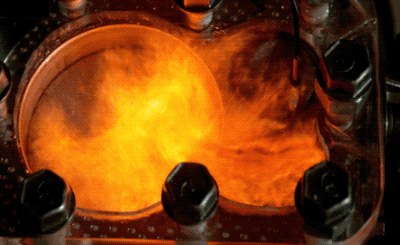
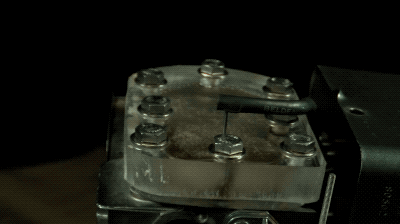
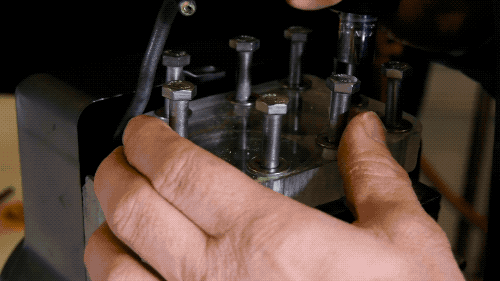
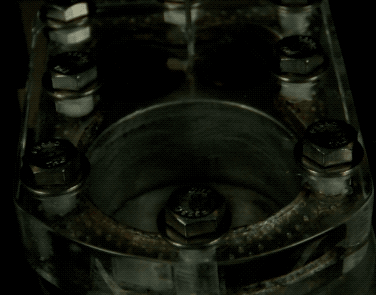
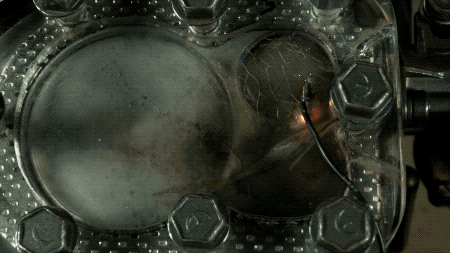
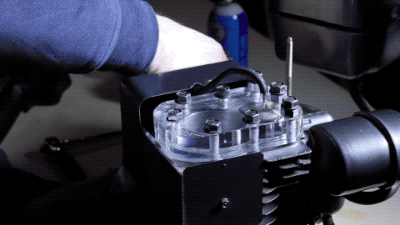

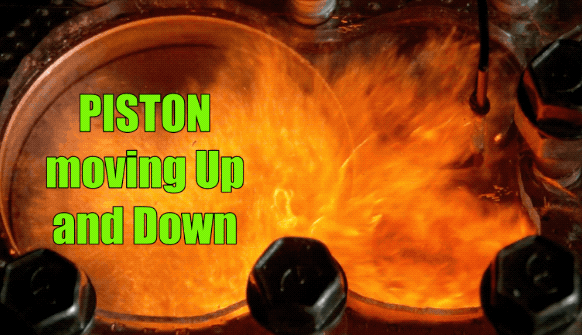
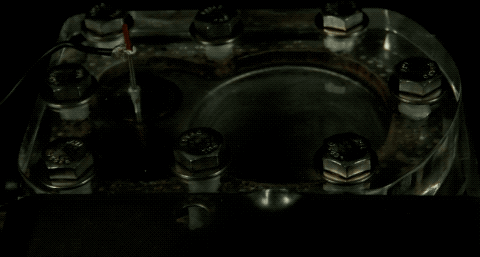
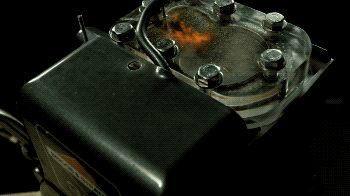

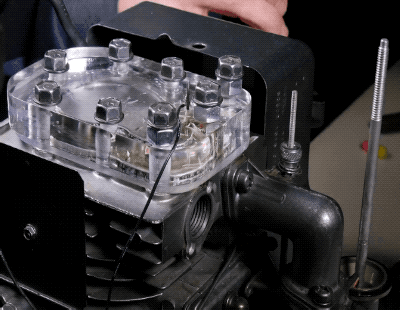
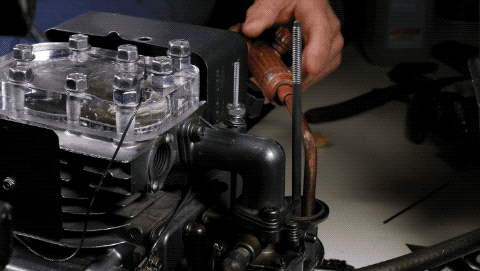
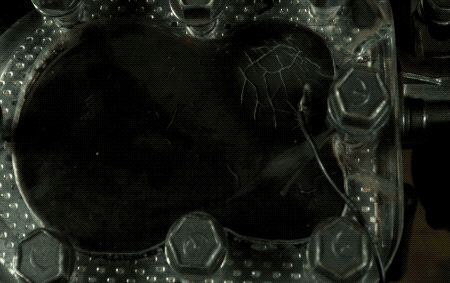
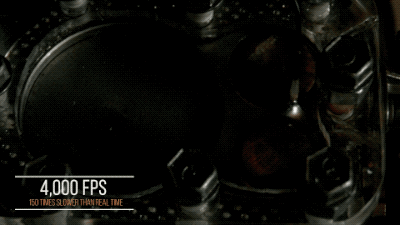

1 - air/fuel intake
2 - compression
3 - ignition/power
4 - exhaust
repeat many times.
Suck
Squeeze
Bang
Blow
And lean burns hotter...
What is depicted here is a 4 stroke (or cycle) engine which uses exhaust and intake valves, and a power (combustion) stroke occurs every other revolution of the crankshaft. Lubricating oil is not mixed with the fuel, the lubricating oil is in the crankcase.
2 stroke engines are less fuel efficient and pollute more, but have fewer parts and produce more power relative to the weight of the engine.